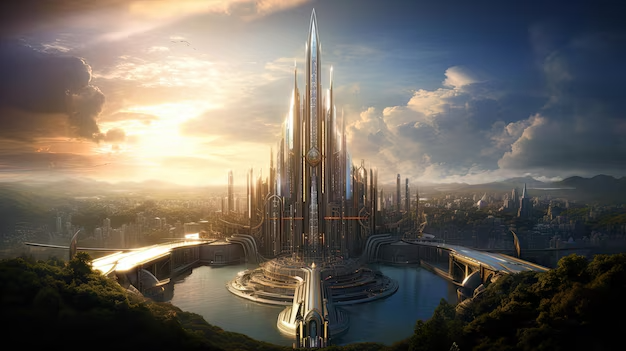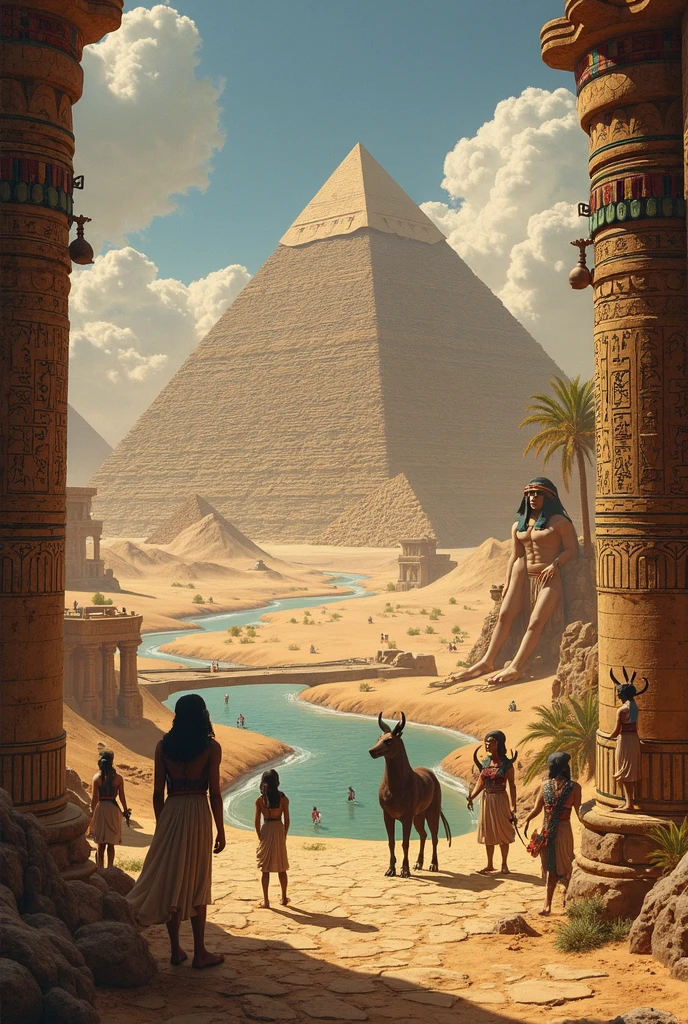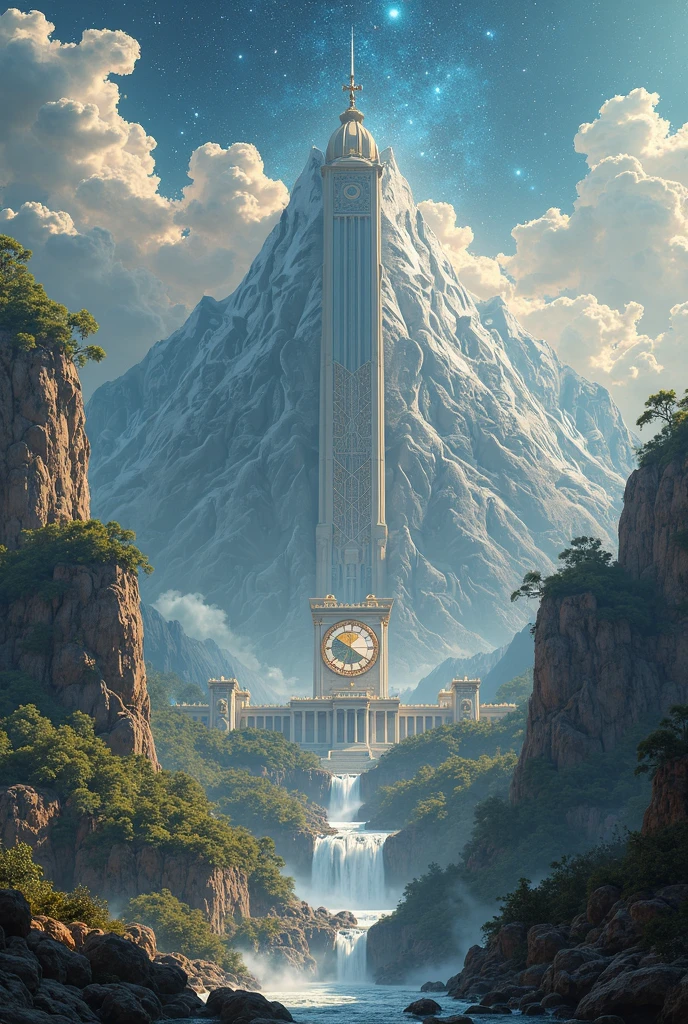Vedic Mythology: The Power of Indra and the Cosmic Order
Vedic mythology, rooted in the ancient scriptures of the Vedas, offers a fascinating glimpse into the spiritual and cosmological beliefs of early Indian civilization. At the heart of this mythology stands Indra, the king of the Devas and the god of thunder, storms, and warfare. His exploits, along with other deities like Agni (fire) and Soma (divine nectar), form the backbone of Vedic narratives.
Who Is Indra in Vedic Mythology?
Indra is one of the most prominent deities in the Vedas, often depicted as a mighty warrior wielding the thunderbolt (vajra) and riding a celestial elephant named Airavata. As the ruler of the heavens, he governs rain, storms, and fertility, making him a central figure in agricultural societies. His battles against chaos, symbolized by the serpent Vritra, highlight his role as a protector of cosmic order.
Key Attributes of Indra
- God of Thunder and Storms: Controls rain and weather, essential for agriculture.
- Leader of the Devas: Commands a host of divine beings in celestial battles.
- Drinker of Soma: Gains immense power from the sacred ritual drink.
- Wielder of the Vajra: His thunderbolt symbolizes destruction of evil forces.
The Role of Agni and Soma in Vedic Rituals
While Indra dominates the martial aspects of Vedic mythology, Agni (fire) and Soma (the ritual drink) play crucial roles in connecting humans with the divine. Agni serves as the messenger between gods and mortals, carrying offerings to the heavens. Soma, on the other hand, is both a deity and a sacred elixir that grants immortality and strength to the gods.
| Deity | Domain | Symbol |
|---|---|---|
| Indra | Thunder, Storms, Kingship | Vajra (Thunderbolt) |
| Agni | Fire, Sacrifice | Flame, Hearth |
| Soma | Divine Nectar, Immortality | Ritual Drink, Moon |
Indra’s Battles and Cosmic Significance
The Vedas recount numerous battles where Indra triumphs over demonic forces, most notably his slaying of Vritra, the serpent who hoarded the waters of creation. This act symbolizes the release of life-giving rains and the restoration of order. His dependence on Soma underscores the importance of ritual offerings in maintaining divine power.
Major Myths Involving Indra
- The Slaying of Vritra: Indra defeats the drought-causing serpent, freeing the waters.
- Defeat of the Asuras: Constant battles against chaos-wielding demons.
- Alliance with Agni and Soma: Divine synergy in maintaining cosmic balance.
The Vedas: Sacred Texts of Vedic Mythology
The Vedas, composed in Sanskrit, are the oldest religious texts of Hinduism and the primary source of Vedic mythology. Divided into four collections—Rigveda, Samaveda, Yajurveda, and Atharvaveda—they contain hymns, rituals, and philosophical teachings. Indra is praised in numerous hymns, particularly in the Rigveda, where his heroic deeds are celebrated.
For further reading on Vedic texts, visit Sacred Texts, a comprehensive resource on ancient scriptures.
The Decline of Indra in Later Hinduism
While Indra was a dominant figure in early Vedic religion, his importance waned in later Hinduism, where deities like Vishnu and Shiva took precedence. However, his legacy persisted in epics like the Mahabharata, where he remains a symbol of kingship and martial prowess.
Comparison of Vedic and Puranic Indra
| Aspect | Vedic Indra | Puranic Indra |
|---|---|---|
| Role | Supreme warrior, rain-bringer | Lesser deity, king of heaven |
| Worship | Central in rituals | Marginalized by Vishnu/Shiva |
| Symbolism | Cosmic order, fertility | Moral ambiguity, power struggles |
Modern Interpretations of Vedic Deities
Today, scholars and spiritual seekers revisit Vedic mythology to understand its philosophical depth. Indra, Agni, and Soma are studied not just as gods but as metaphors for natural forces and human consciousness. For an academic perspective, explore Encyclopaedia Britannica’s Veda entry.
Indra’s Influence Beyond Hinduism
The figure of Indra appears in other cultures, such as Buddhism and Jainism, where he is often reimagined as a guardian deity. His association with storms and kingship finds parallels in other Indo-European mythologies, like Zeus in Greek lore. Learn more about cross-cultural connections at World History Encyclopedia.
Explore more fascinating articles on mythology and spirituality, and join our community on Facebook at Zatiandrops for daily updates!
The Symbolism of Soma: Divine Nectar and Mystical Plant
One of the most enigmatic elements of Vedic mythology is Soma, a sacred substance that blurs the line between deity, ritual offering, and botanical mystery. Described as a golden-hued elixir, Soma grants immortality, poetic inspiration, and battle prowess to gods like Indra. Scholars debate whether Soma was derived from a real plant (possibly Ephedra or Amanita muscaria) or purely symbolic of spiritual enlightenment.
The Ritual Use of Soma
- Preparation: Pounded by priests using stones, filtered through wool, and mixed with water or milk.
- Consumption: Ingested during yajnas (fire rituals) to induce visions and commune with deities.
- Effects: Described in the Rigveda as “lifting the soul to the heavens” and “unleashing divine fury in warriors.”
Agni: The Dual Nature of Sacred Fire
Unlike other Vedic gods, Agni embodies a paradox—both a tangible element (fire) and a divine mediator. His three forms—earthly fire (garhapatya), altar fire (ahavaniya), and solar fire (dakshina)—reflect the Vedic worldview’s layered cosmology. Agni’s role extended beyond rituals; he was considered a witness to oaths and a purifier of sins.
| Form of Agni | Location | Function |
|---|---|---|
| Garhapatya | Household hearth | Domestic rituals, cooking |
| Ahavaniya | Sacrificial altar | Channel for offerings to gods |
| Dakshina | Southern sky | Solar energy, ancestral rites |
The Asuras: Antagonists or Misunderstood Forces?
While Indra’s battles against the Asuras paint them as chaotic foes, early Vedic texts suggest a more nuanced relationship. Initially, Asuras like Varuna were revered as cosmic regulators. Over time, they were demonized, possibly reflecting socio-political shifts. Some scholars argue this split mirrors the Iranian Ahura (gods) and Daeva (demons) dichotomy.
Notable Asuras in Vedic Lore
- Vritra: The serpent embodying drought, slain by Indra.
- Namuci: A deceptive Asura defeated through Indra’s cunning.
- Shambara: A fortress-dwelling enemy associated with darkness.
The Cosmic Cow: Symbol of Abundance and Creation
Vedic hymns frequently mention the cosmic cow (Kamadhenu or Aditi), representing nourishment and the earth’s fertility. Her milk equated to rain, and her body symbolized the universe. This imagery underscores the Vedic reverence for cattle, which were central to pastoral economies.
Rivers as Goddesses: Saraswati and the Sapta Sindhu
Rivers like the Saraswati (now believed to be extinct) were deified as life-giving goddesses. The “Sapta Sindhu” (seven rivers) mentioned in the Rigveda—including the Indus and Ganges—were worshipped as purifiers and sustainers. Saraswati later evolved into the goddess of wisdom in Hinduism.
Sacred Rivers of the Vedas
- Saraswati: Praised as the “best of mothers” and “mightiest of rivers.”
- Sindhu (Indus): A vital artery of early Vedic civilization.
- Yamuna: Associated with the twin deity Yami, sister of Yama.
The Vedic Pantheon’s Lesser-Known Deities
Beyond Indra and Agni, the Vedas feature a rich array of gods with specialized roles:
| Deity | Domain | Unique Trait |
|---|---|---|
| Vayu | Wind | Breath of life, charioteer of Indra |
| Ushas | Dawn | Dispeller of darkness, youthful maiden |
| Brihaspati | Prayer | Personification of sacred speech |
Vedic Rituals: The Mechanics of Yajna
Central to Vedic worship was the yajna, a fire sacrifice designed to maintain cosmic harmony. Priests (hotri) chanted hymns while offerings—ghee, grains, or Soma—were poured into flames. The ritual’s precision mirrored the universe’s ordered nature, with every gesture symbolizing a cosmic principle.
Key Components of a Yajna
- Altar Construction: Geometric designs representing the earth’s quadrants.
- Mantras: Rigvedic hymns invoking specific deities.
- Dakshina: Gifts to priests, ensuring ritual efficacy.
The Concept of Rta: Cosmic Order
Underlying Vedic mythology is Rta, the principle of universal order governing seasons, morality, and divine laws. Indra and Varuna were its chief upholders, punishing those who violated it (e.g., drought for broken oaths). This concept later evolved into Dharma in Hinduism.
Vedic Astronomy and Mythology
Celestial bodies held divine status in the Vedas. The sun (Surya) rode a chariot across the sky, while the moon (Chandra) was linked to Soma. Constellations like the Pleiades (Krittika) were seen as celestial mothers, influencing agriculture and rituals.
Astral Deities and Their Roles
- Surya: Solar god, healer of diseases.
- Chandra: Lunar god, keeper of time and vegetation cycles.
- Ashvins: Twin horsemen symbolizing dawn and dusk.
The Legacy of Vedic Hymns in Modern Hinduism
Though Vedic gods faded in prominence, their hymns endure in Hindu rites. The Gayatri Mantra (Rigveda 3.62.10), dedicated to Savitr (a solar deity), remains one of Hinduism’s most recited prayers. Meanwhile, Agni is still invoked in wedding ceremonies, symbolizing purity.
For deeper insights into Vedic rituals, visit Hindu Website’s Vedic Portal.
Indra in Southeast Asian Traditions
Beyond India, Indra’s influence permeated Southeast Asian cultures. In Thai mythology, he is Phra In, while in Bali, he remains a guardian of directions. These adaptations highlight the fluidity of Vedic motifs across borders.
Dive into the world of ancient myths with us—follow Zatiandrops on Facebook for daily explorations!
The Maruts: Storm Gods and Indra’s Fierce Companions
Among the lesser-known but vital deities in Vedic mythology are the Maruts, a group of storm gods who accompany Indra into battle. Described as youthful, boisterous, and clad in golden armor, they personify the tempestuous winds and thunderclouds. Their presence amplifies Indra’s power, symbolizing the collective force of nature’s fury.
Characteristics of the Maruts
- Number: Ranging from 27 to 60 in different hymns, often linked to Rudra (an early form of Shiva).
- Weapons: Lightning bolts, spears, and axes, mirroring Indra’s vajra.
- Role: Bringers of rain, protectors of moral order, and destroyers of evil.
Varuna: The Ethical Counterpart to Indra
Before Indra’s ascendancy, Varuna held supremacy as the god of cosmic law (Rta) and the celestial ocean. Unlike Indra’s warlike nature, Varuna embodied justice, oaths, and the night sky. His decline in later texts reflects a shift from ethical sovereignty to martial heroism in Vedic worship.
| Aspect | Varuna | Indra |
|---|---|---|
| Domain | Cosmic order, oceans | Storms, warfare |
| Symbol | Noose (for binding sinners) | Thunderbolt (for destruction) |
| Worship Decline | Faded into obscurity | Merged into Puranic lore |
The Mysterious Ribhus: Divine Artisans
The Ribhus, a trio of semi-divine craftsmen, exemplify the Vedic reverence for skill and innovation. Elevated to godhood for their ingenuity—such as rejuvenating aging gods and crafting Indra’s chariot—they represent the intersection of divinity and human ingenuity.
Notable Feats of the Ribhus
- Reviving Horses: Restoring youth to the sun god’s steeds.
- Creating Tools: Fashioning agricultural implements for gods and humans.
- Ritual Mastery: Innovating sacrificial techniques praised in the Rigveda.
Vedic Goddesses: Power Beyond Gender Binaries
While male deities dominate Vedic narratives, goddesses like Ushas (Dawn) and Prithvi (Earth) wield immense influence. Ushas, depicted as a radiant maiden, heralds the sun’s arrival, while Prithvi, paired with Dyaus (Sky), forms the primordial parents of creation.
Key Vedic Goddesses and Their Roles
- Aditi: Mother of the Adityas (solar deities), embodying infinity.
- Ratri: Night goddess, counterpart to Ushas, offering rest and protection.
- Vāc: Personification of sacred speech, central to mantra efficacy.
The Horse Sacrifice (Ashvamedha): Ritual of Sovereignty
One of the most controversial yet significant Vedic rituals was the Ashvamedha, a horse sacrifice asserting a king’s dominion. The consecrated stallion roamed freely for a year, followed by warriors, before being ritually slain. Its symbolism intertwined fertility, political power, and cosmic renewal.
| Stage | Ritual Action | Symbolism |
|---|---|---|
| Release | Horse set loose with guards | Claiming unchallenged territory |
| Journey | Year-long wandering | Integration of cosmic and earthly realms |
| Sacrifice | Ritual killing and offering | Renewal of royal power and fertility |
Indra’s Consorts: The Often-Overlooked Goddesses
Though Indra’s exploits are well-documented, his relationships with goddesses like Shachi (Indrani) reveal layers of his persona. Shachi, celebrated for her loyalty and cunning, occasionally aids Indra in battles, showcasing the dynamic interplay of gender roles in Vedic myths.
The Panchajanya: Mythological Instruments of Power
Vedic texts mention mystical objects like the Panchajanya (Vishnu’s conch, later Puranic) and Indra’s Aindri weapons. These items, often gifts from other gods or forged by divine artisans, highlight the interconnectedness of the Vedic pantheon.
Legendary Artifacts in Vedic Lore
- Vajra: Indra’s thunderbolt, crafted from the bones of the sage Dadhichi.
- Pushpaka Vimana: A flying chariot later associated with Kubera and Ravana.
- Kamandalu: Ritual water vessel used by sages and gods alike.
The Ecological Wisdom of Vedic Hymns
Modern environmentalists draw parallels between Vedic hymns and ecological balance. Verses addressing rivers, forests, and cattle reflect an ancient ethos of coexistence. For instance, the Prithvi Sukta (Atharvaveda) venerates Earth as a nurturing mother, urging sustainable living.
Indra in Jain and Buddhist Cosmology
In non-Hindu traditions, Indra undergoes dramatic reinterpretations. Jain texts depict him as a Shakra, a title for heavenly kings, while Buddhism casts him as a devotee of the Buddha. These shifts illustrate the fluidity of mythological figures across religions.
Indra’s Roles in Different Traditions
| Tradition | Indra’s Role | Key Difference |
|---|---|---|
| Jainism | Heavenly king (Shakra) | Subordinate to enlightened beings |
| Buddhism | Protector of Dharma | Witness to Buddha’s enlightenment |
| Hindu Puranas | Diminished ruler | Overshadowed by Trimurti |
The Nasadiya Sukta: A Vedic Creation Hymn
The Rigveda’s Nasadiya Sukta (10.129) stands out for its philosophical depth, questioning the origins of the universe with lines like, “Who truly knows? Whence this creation sprang?” Its agnostic tone contrasts with later creation myths, showcasing the Vedas’ intellectual diversity.
Vedic Music and Chants: The Roots of Indian Classical Arts
The Samaveda, dedicated to melodic chants, laid the foundation for Indian classical music. Its hymns, set to precise scales, were believed to harmonize the cosmos. Modern musicians still draw from these ancient tonal patterns.
Elements of Vedic Chanting
- Svara: Seven primary notes, precursors to the raga system.
- Stobha: Syllabic inserts enhancing rhythmic complexity.
- Grama: Scales like shadja and madhyama, still used today.
For an immersive dive into Vedic chants, explore The Vedic Chant Center.
The Bhrigus: Sage Lineage and Fire Keepers
The Bhrigus, a clan of sages, played a pivotal role in preserving Vedic rituals. Legends credit them with discovering fire (Agni) and composing hymns. Their rivalry with the Angirasas, another priestly family, underscores the competitive yet collaborative nature of Vedic scholarship.
Vedic Afterlife: The Paths of Pitrs and Devayāna
Death in Vedic thought led to two potential paths: the Pitṛyāna (ancestral path) for rebirth or the Devayāna (path of light) for liberation. Rituals like Shraddha ensured ancestors’ comfort in the afterlife, reflecting a deep kinship between the living and the dead.
Concepts of the Vedic Afterlife
- Pitṛloka: Ancestral realm governed by Yama.
- Devayana: Celestial highway for enlightened souls.
- Reincarnation: Early hints in the Rigveda, later expanded in Upanishads.
Join our ongoing exploration of ancient wisdom—follow Zatiandrops on Facebook for daily mythological insights!


